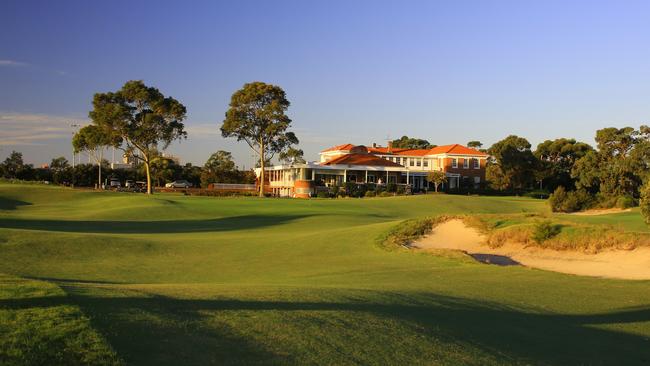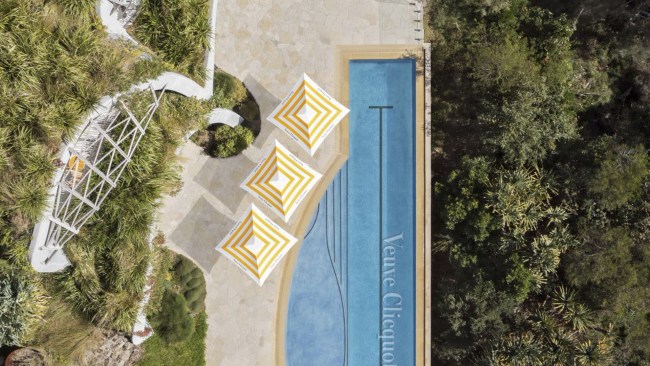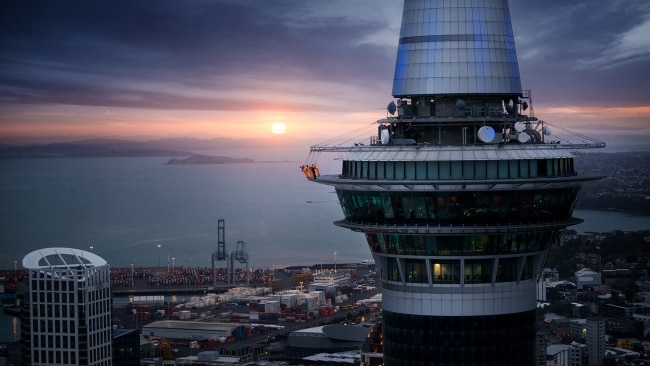Golf tourism: The Australian, Barnbougle, Royal Melbourne, and more
Casual golfers can now play on some of the world’s most exclusive courses in Australia, New Zealand and Hawaii.

Travis Bruinsma stands, a picture of poise and balance, on the first tee at Sydney’s exclusive Bonnie Doon golf club. He glares down the manicured fairway, sizes up the ball, swings a driver over his shoulder and sends the tiny white orb flying due south and die-straight.
He bends down to pick up his tee, ball still sailing, and flashes a toothy smile. “Lucky shot,” he beams.
Bruinsma, a former semi-professional golfer based in Sydney, has joined me and two others for a round at the exclusive members-only links course in Sydney’s eastern suburbs. Founded in 1897, Bonnie Doon is one of the oldest golf courses in the country, and with “championship status” — it is eligible to host professional tournaments — it is off limits to the general public. But not today.
Bruinsma runs LuxGolf, a company that offers access for golfers — from hapless hackers to pin-high sharpshooters — to some of the world’s most exclusive courses in Australia, New Zealand and Hawaii.
In Australia, the company has deals with the 20 top-ranked courses in the country. Sydney’s The Australian, Tasmania’s Barnbougle and Royal Melbourne, once the preserve of dynastic memberships and elite pricing systems, are all within the grasp of the casual hooker-and-slicer, at a price. This is golf, but not as most of us know it.
Having collected us earlier in a leather-seated Porsche Cayenne and kitted us out with a set of brand-spanking Callaway clubs (Titelist, if one would prefer) and a complimentary velvet gladbag stocked with tees, balls, water, glove, towel and markers, Bruinsma leads us out to the first hole, tees off with stylish understatement and promptly makes his apologies. He had planned to play the round, but a planeload of businessmen has just landed and he has an appointment with the first tee at the prestigious The Australian course, home of the 2015 PGA Australian Open.
He will have to miss the first few holes, promising to find us on the course later. I am more than a little relieved, the paranoid ramblings of comedienne Phyllis Diller ringing less loudly now in my ears (“the real reason your pro tells you to keep your head down is so you can’t see him laughing at you”).
I study the fairway, grip the club, close my eyes and send the ball uncharacteristically in the right direction. It sails high, suspended for a moment in the azure sky before bouncing gently back to earth. A chorus of cicadas is broken by the gentle hum of the electric golf cart and the dulcet tones of its resident GPS and shot-selection unit as we idle up Bonnie Doon’s luxuriant first fairway.
Golf, one of the country’s fastest growing sports, is booming. The international golf tourism industry is estimated to be worth a cool $33 billion annually. And while Asia remains the world’s leading destination for travelling links-seekers (the continent reportedly accounts for 34 per cent of the market), Australia has only in recent years cottoned on to its own potential.
According to a 2015 study from the Australian Golf Industry Council, more than 1.6 million golf trips are taken annually here, representing a net worth to the tourism sector of between $820 million and $1.09bn. Twenty per cent of that figure, which is projected to grow, is attributed to international travellers. Golf tourism is no longer a hit-and-giggle affair. It is big business down under.
A few holes in, Bruinsma — all sartorial splendour and smiles, every inch the golf pro — reappears on the course, and jumps into the cart. He reaches deep into the cooler, pulls out a sports drink and marvels at the course around him. “Australians are so lucky to live in one of the most spectacular golf course-rich countries in the world,” he says. “In discerning golf circles around the planet, Australia is now on the top of many people’s bucket-list.”
NSW commands the lion’s share of golf tourism dollars; indeed it has some of the country’s premier golf courses — Ellerston in the Hunter Valley, The Australian, Royal NSW and Royal Sydney, home of this November’s Emirates Australian Open, among them. (The PGA tournament is a big money-spinner: last year’s event, won by Australian Matt Jones, generated $3.2 million in a single weekend.)
While the NSW Murray River region remains the most visited golfing destination in the country, the revelation in recent years has been Tasmania. The island state boasts three of the country’s top-ranked golf courses — spectacular Cape Wickham links on remote King Island, and Barnbougle Dunes and Lost Farm links in the windswept northeast of Tasmania. The courses, each known for rugged beauty and difficulty, were this year ranked third, fifth and ninth respectively in the country by Golf Digest. The industry organ’s definitive biennial list — sweated on by course designers and golfers globally — ranked Cape Wickham in its debut year as No 24 in the world, the highest of the Australian courses of which an unprecedented nine made the top 100. The multimillion-dollar King Island course, designed by American Mike DeVries in association with golf entrepreneur Duncan Andrews in one of the most isolated parts of the planet, has become a tourism destination in its own right. Bookings at the 18-hole course and its sister links, Ocean Dunes, are hard to come by. The state is also home to Australia’s most historic golf course, Ratho Farm at Bothwell, just north of Hobart. Founded 150 years ago, the 18-hole links course bills itself as the oldest outside Scotland.
“Tasmania is just doing amazing things with golf in this country,” says Bruinsma, whose company offers luxury private jet trips for up to eight people from the mainland (ex-Essendon in Melbourne) to Barnbougle and King Island. “It is a fantastic thing for the sport to have world-class courses in that part of the world.”
He says the renaissance in golf is due to two factors: the international funding push into youth programs; and Jason Day, the Australian star of the golfing world.
“Jason has a lot to do with golf’s growing popularity in Australia,” Bruinsma says of the Queenslander, who last year won the US PGA and is ranked No 1 in the world. “People thought he would be a flash in the pan, but he has gone on to show the world he is the best. He’s a hip guy. A nice guy. He is the new Greg Norman and that has really pumped up (golf’s) popularity factor.”
As for the country’s increasing reputation as a golfing destination, he says the quality of courses is world class. “Our golf courses are speaking volumes for themselves. In a time where our country can proudly claim an unprecedented nine of the World’s Top 100 courses, the international spotlight is shining bright on Australia.”
I play a lacklustre iron shot up the fairway of the 18th hole. Bruinsma, who started playing golf at the age of five as a wide-eyed kid in Edmonton, Alberta, seems to be having no such trouble. He lines up a far more sensible five wood and confidently delivers his ball within a metre of the green.
“The North American and Australian golf industries differ quite dramatically in regards to access,” he says as we drive towards the green. “Eight out of 10 courses back overseas were public, easily accessible and always in spectacular shape so it was never difficult to find a great round of golf. In Australia, however, those eight out of 10 courses are private, member-only courses that everyone wants, or dreams, to play.”
I reach the final flag sooner than I expect. Sensibly, I’ve stopped scoring. The club’s historic clubhouse, where we will soon be reclining with a celebratory round or two, stands proudly just beyond the green. The sight of figures inside milling around the bar, reliving the course-bound glories of minutes ago, could hardly be more tempting.
Bruinsma sizes up his approach and chips up to the pin for a birdie. I bring the club down over the ball and, miraculously, it drops inches from the hole, leaving an easy tap-in for par. I confidently line up the putt, and miss by a half-metre. Then I miss the next one.
I walk away with a double-bogey and a smile. The dream is over. For one fine day, we lived it.
Tim Douglas was a guest of Destination NSW.
CHECKLIST
LuxGolf offers golf experiences in Sydney, Melbourne, Tasmania, New Zealand and Hawaii, and is adding a Gold Coast office later this year. All-inclusive prices range from $199 to $649 a person.
More: luxgolf.com.




To join the conversation, please log in. Don't have an account? Register
Join the conversation, you are commenting as Logout